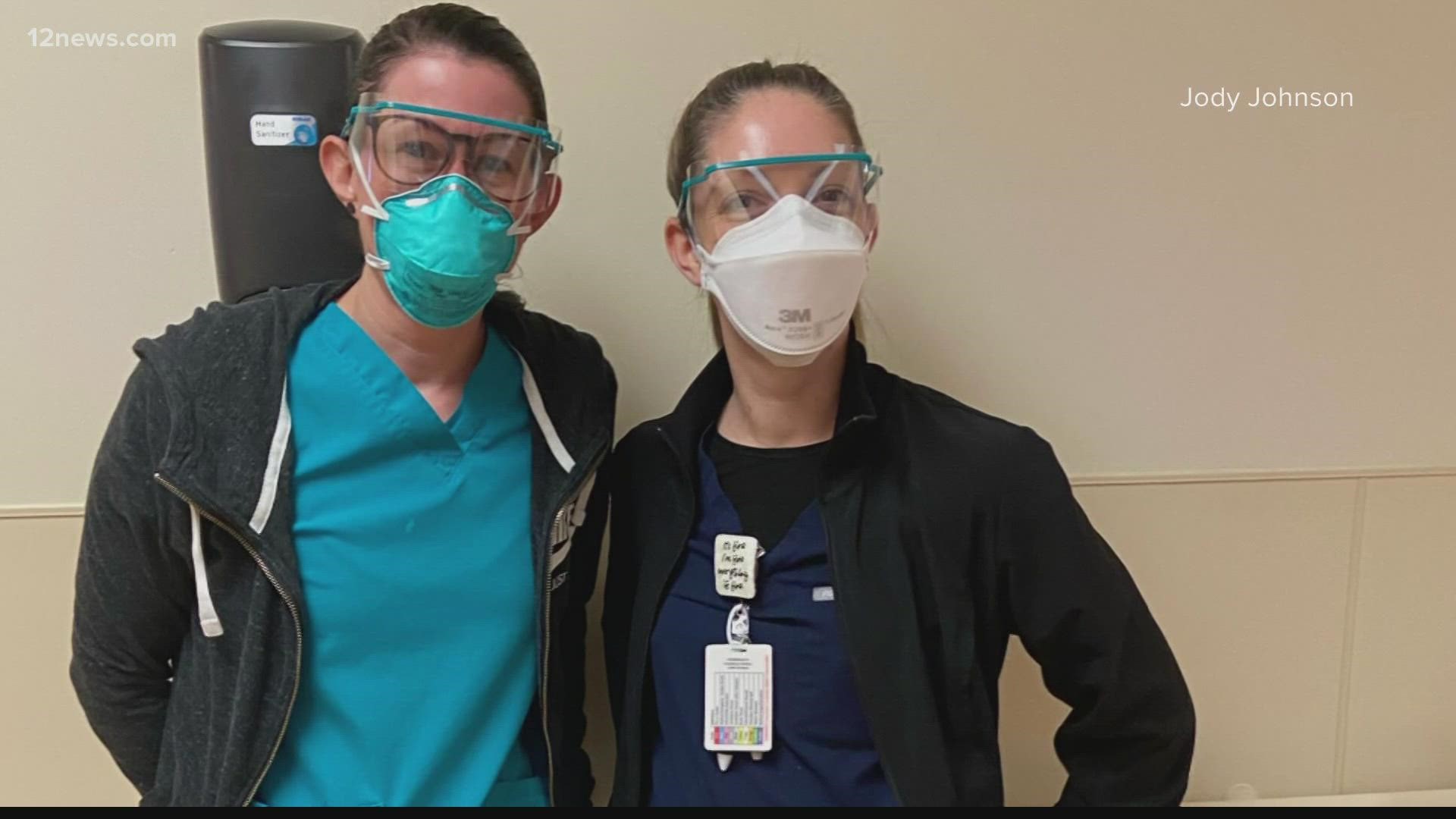PHOENIX — It was around this time last year that Arizona began to experience a surge in cases, hospitalizations and deaths from COVID-19.
Compared to a year ago, COVID-19 case averages are higher now than they were in 2020. Now, cases are rising again, and more people are needing hospital care today than a month ago.
Data on the rise
Data from the Arizona Department of Health Services shows back on Oct. 4, there were about 1,786 people in Arizona hospitals fighting COVID-19.
ADHS reported 2,200 people were needing hospital care for the virus on Monday, which is a 23% increase over the past month or so.
“We were all hopeful that we would not be in this situation right now,” Jody Johnson, director of nursing for a Valley COVID-19 med-surge unit, said.
Johnson and her team have helped COVID-19 patients throughout the pandemic.
"The level of exhaustion is really hitting in knowing that there may not be an end in sight," Johnson said.
She said they are helping take care of more patients now than a month ago.
“It seems a bit like déjà vu to last winter or last July when we surged before,” Johnson said.
What’s different this time is the COVID-19 vaccines are widely available, but Johnson continually sees patients who did not take the vaccine, and then have regrets as they battle their disease.
“One of the things I ask is, ‘What was your hesitation in getting the vaccine?’” Johnson said. “And they say, ‘Well, I was so worried about the side effects, or the consequences of getting [the vaccine].’ And then they realize, COVID is that much worse.”
Dr. Joe Gerald, an assistant professor at the University of Arizona's Zuckerman College of Public Health has been modeling the pandemic for Arizona for the past year and a half.
In his weekly report, Gerald noted how case rates have risen 62% over the past three weeks as well.
"For most counties, current rates exceed those observed at the height of the summer 2020 wave," Gerald noted.
More patients, fewer staff
Dr. Frank LoVecchio, an ER physician with Valleywise Health said while there are COVID-19 patients coming into his ER, people are coming in with other illnesses and injuries too.
“I would say that we’re overcrowded,” LoVecchio said.
LoVecchio said it’s a combination of more people seeking care for COVID, and things like auto accidents, drug overdoses, heart issues, etc., plus fewer people to care for them that’s straining the hospitals.
“I don’t remember the last time I’ve worked where they said, ‘We have enough nurses for the whole shift,'” LoVecchio said.
Staffing is what Johnson said she’s keeping her eye on as she looks toward the future.
“There is a level of safety that you can have, but then there’s also it may be safe, but it’s just, we can’t run thin day after day and expect people to keep coming back to work,” Johnson said.
Preparing for what’s next
LoVecchio said there are concerns about people gathering for Thanksgiving, Christmas, New Year and other winter holidays over the next two months and how that could impact COVID-19 spreading in the community.
“I feel like if we make it through that, and we don't get a big uptick, I feel like you know, that's a great sign,” LoVecchio said.
LoVecchio said unvaccinated family members who are gathering at the holidays are the ones at more risk at these gatherings. Noting, while people can still get sick from the virus if they are fully vaccinated, the cases are typically mild.
However, Johnson is concerned over what COVID and winter illnesses could mean for the healthcare system.
“I think it’s going to be a tough winter for health care. I think we’re going to see a lot of sick people, not just with COVID, but with all the winter illness,” Johnson said. “And I do see it straining our health care system, potentially across the country, to about as max as it can take it.”
COVID-19 News and Updates
Subscribe to the 12 News YouTube channel to receive notifications on the latest videos about the latest information on the coronavirus.

